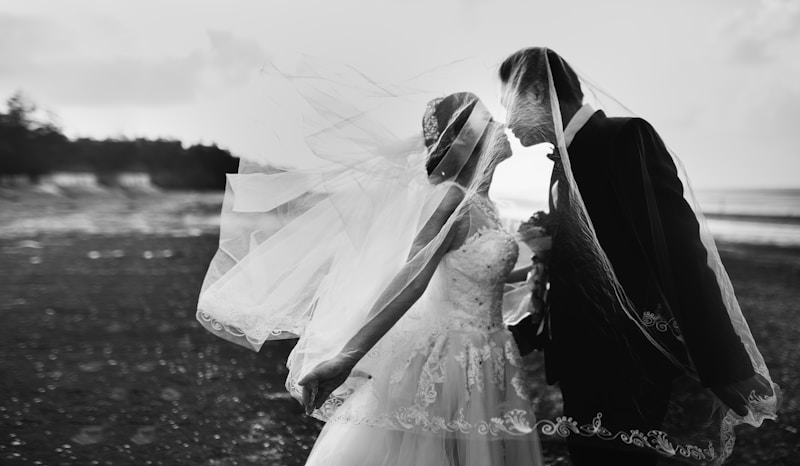Mastering Traditional Wedding Invitations: A Complete Guide
Welcome to the World of Traditional Wedding Invitations
When planning a wedding, one of the first key details that couples need to address is the invitations. Traditional wedding invitations serve as an essential part of the wedding planning process, as they not only announce the big day but also set the tone for the entire event. This guide will walk you through everything you need to know about traditional wedding invitations, from design to etiquette, to ensure your guests are excited about celebrating your love.
Understanding Traditional Wedding Invitations
Traditional wedding invitations are typically formal, elegant, and often follow specific guidelines regarding wording, layout, and design. They generally reflect the couple's style and the formality of the event. Here are some key components that make up a traditional wedding invitation:
- Formal Wording: The language used in traditional invitations is formal and respectful. It often includes phrases like "request the honor of your presence" and is typically devoid of personal sentiments, focusing instead on the close family names of the couple.
- Invite Style: Traditional wedding invitations typically feature designs that are classic and elegant, often incorporating calligraphy and rich color palettes.
- Envelopes: The envelope is equally important, commonly lined with complementary colors or designs and labeled with the recipient's full name and address in formal script.
Components of Traditional Wedding Invitations
| Component | Description |
| Host Line | Indicates who is hosting the wedding, often the bride and groom's parents. |
| Couple’s Names | The names of the bride and groom, usually in a larger font. |
| Date and Time | Clearly states the date and time of the ceremony, written out in full. |
| Venue Information | Details about the location of the wedding ceremony, including the address. |
| RSVP Details | Instructions for guests to respond to the invitation, typically including a date by which they should confirm their attendance. |
Choosing the Right Design
The design of your traditional wedding invitations should complement the theme and style of your wedding. Here are some tips to consider:
- Color Palette: Use colors that match your wedding theme. Classic combinations include gold and ivory, navy and silver, or shades of pastel colors for a softer look.
- Fonts: Choose elegant fonts that are easy to read. Script fonts for the names can add a touch of sophistication, while serif fonts for the rest of the text maintain clarity.
- Graphics: Simple floral graphics, ornate borders, or even a monogram can add a personalized touch without overwhelming the overall design.
Common Mistakes to Avoid
When creating your traditional wedding invitations, be mindful of the following common mistakes that can detract from your final product:
- Neglecting to Proofread: Ensure all details are correct, including names, dates, and addresses. Errors can lead to confusion and embarrassment.
- Using Informal Language: Maintain a formal tone throughout the invitation. Avoid slang or overly casual phrases.
- Overcomplicating the Design: While creativity is important, too much detail can make an invitation look cluttered. Keep it elegant and straightforward.
Wedding Invitation Etiquette
Understanding the etiquette surrounding traditional wedding invitations can help prevent any social faux pas. Here are a few key rules to follow:
- Send Invitations Early: Invitations should be sent out at least 6-8 weeks before the wedding date, giving guests ample time to make travel arrangements and RSVP.
- Addressing Invitations: Use full names and proper titles when addressing the envelopes. Avoid using informal nicknames or abbreviations.
- Including All Necessary Information: Ensure you provide all details, including the dress code, accommodation options, and travel information if necessary.
How to RSVP and Manage Responses
RSVPs are crucial for planning your wedding. Here’s how to efficiently manage them:
- Include Instructions: Clearly state how guests should respond, whether through mail, phone, or an online portal.
- Set a Deadline: Provide a specific date by which guests need to RSVP to assist with catering and seating arrangements.
- Track Responses: Keep a checklist or spreadsheet of who has responded, so you can follow up with non-respondents if necessary.
Ordering and Sending Your Invitations
After designing and finalizing your traditional wedding invitations, it’s time to place the order. Here are some strategic steps:
- Choose a Reputable Printer: Find a printing service experienced in creating high-quality wedding invitations. Check reviews and ask for samples to gauge their work.
- Opt for the Right Paper: Select paper that reflects the quality you want for your invitations. A heavier cardstock often feels more luxurious.
- Mail Early: As noted, sending invitations out early is crucial. Aim to mail them at least two months in advance.
Digital Alternatives: A Modern Twist
Though traditional wedding invitations have their charm, digital invitations are becoming increasingly popular due to convenience and cost-effectiveness. Many couples combine both approaches, sending traditional paper invites to close family and friends while using digital invites for wider groups. Here are some benefits and considerations:
- Cost-Effective: Digital invitations often cost less than printed ones, allowing couples to allocate their budget elsewhere.
- Easy to Customize: Digital platforms often offer various design templates, making customization quick and easy.
- Instant Delivery: Digital invitations can be delivered instantly via email or social media, allowing for immediate communication.

Wrapping Up: Your Traditional Wedding Invitation Journey
Choosing the right traditional wedding invitations is not just about aesthetics; it’s also about etiquette and planning. You want your invitations to convey the significance of your wedding day while ensuring your guests feel honored to be invited. Remember the importance of clarity, formality, and adherence to etiquette in your invitations. Whether you choose luxurious cardstock or digital solutions, your wedding invitations will carry your message of love and celebration. Planning well in advance will alleviate last-minute stresses, allowing you to focus on the joy of your wedding day. Happy planning!